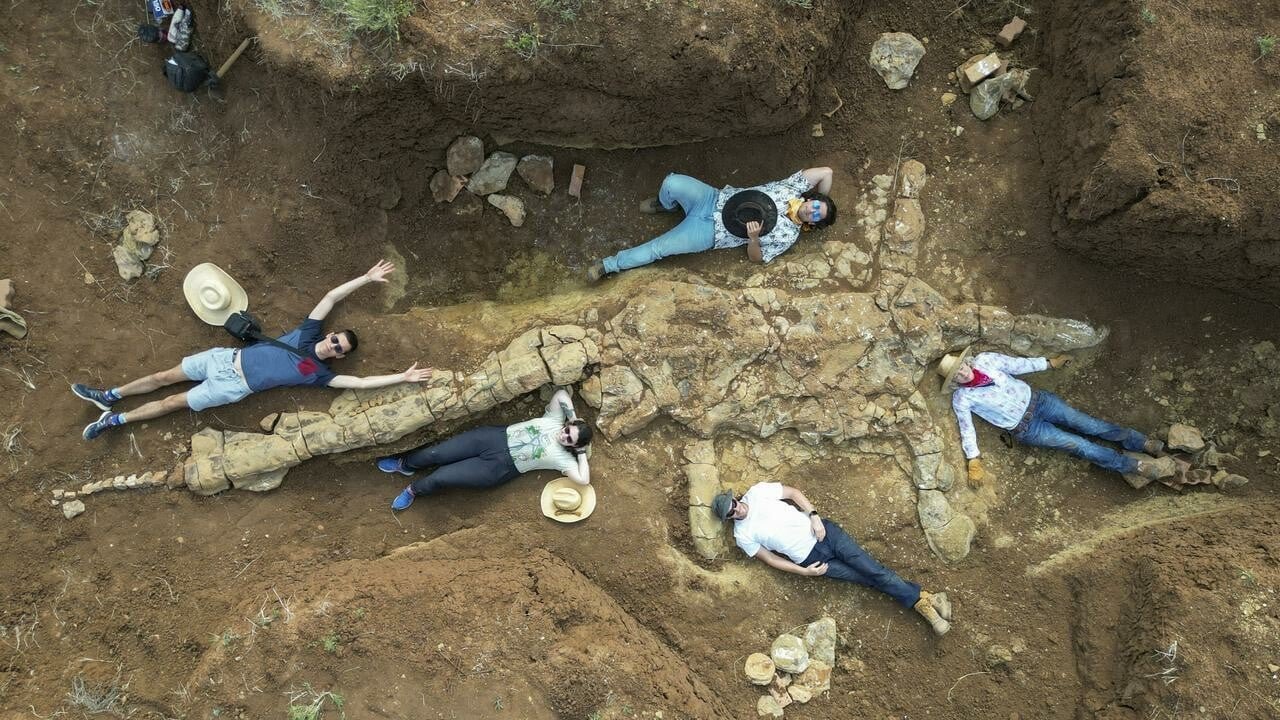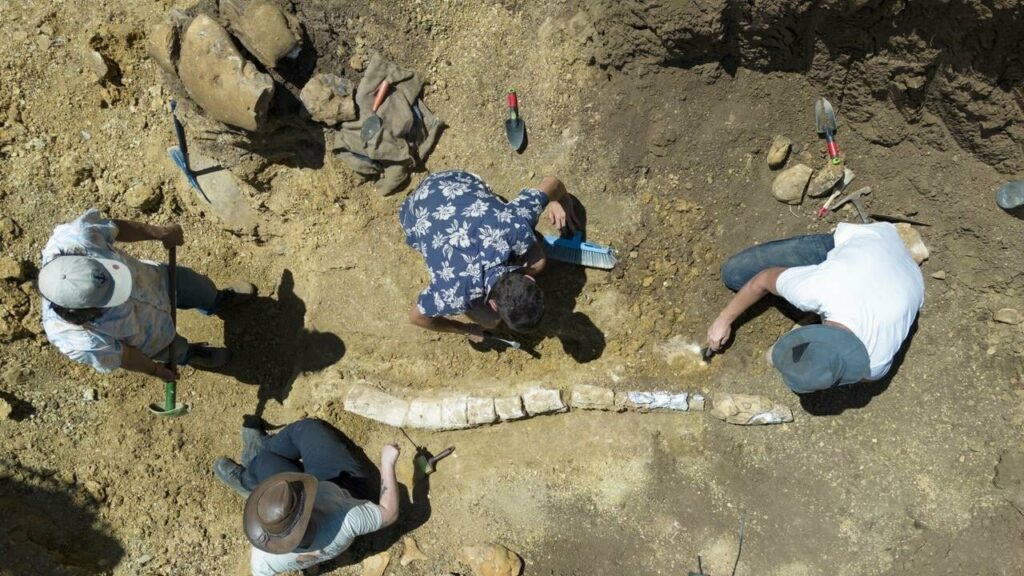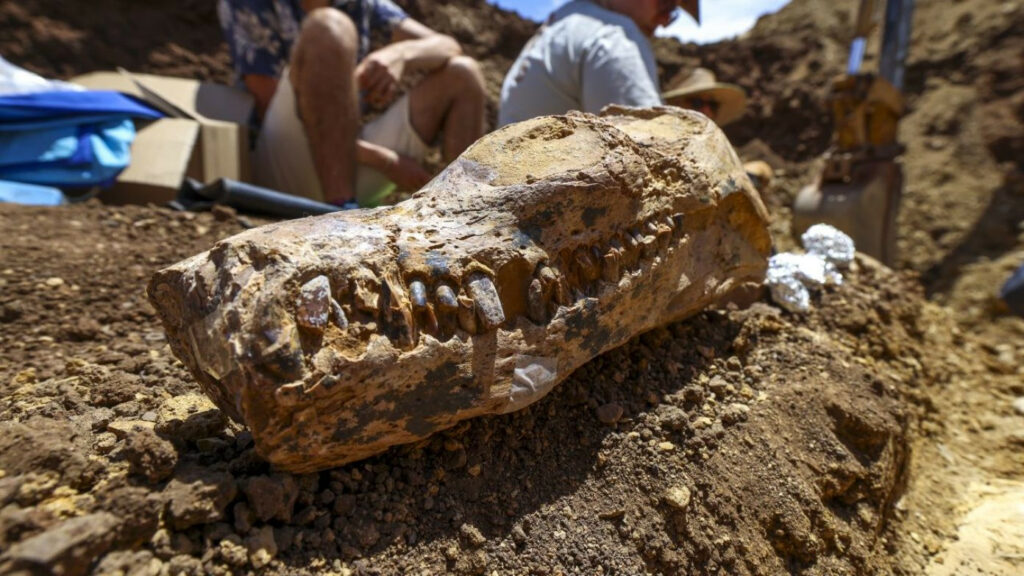The Remarkable Discovery

In a groundbreaking find, amateur fossil hunters stumbled upon the remarkably well-preserved skeleton of a giant 100-million-year-old marine reptile on a cattle station in Queensland, Australia, last August. Standing an impressive 6 meters tall, the remains belong to a young long-necked plesiosaur, also known as an elasmosaurus.
A Window into the Prehistoric World
The Eromanga Sea and its Ancient Inhabitants

During the Cretaceous period, approximately 150 million years ago, the Eromanga Sea covered vast expanses of inland Australia with 50-meter-deep waters. It was in these ancient oceans that the elasmosaurs, majestic creatures reaching lengths of 8 to 10 meters, thrived.
A Rosetta Stone for Paleontology
Espen Knutsen, the senior curator of paleontology at the Queensland Museum, likened this groundbreaking discovery to the famed Rosetta Stone, which helped decipher ancient Egyptian hieroglyphs. He emphasized the significance of finding an intact fossil, stating:
“We have never found a body and a head, and this may be the key to the future of research in the field. Because the neck of plesiosaurs made up 2/3 of them, the head often separated from the body after they died, which made the discovery of an intact fossil very difficult.”
Unlocking the Secrets of the Cretaceous Period

This exceptional find could “unlock” invaluable insights into the origin, evolution, and ecology of the Cretaceous period in the region. Chemical tests on the teeth may reveal crucial information about the elasmosaurus’ diet, migratory patterns, and the intricate details of the ecosystem in which it lived.
Ancient Marine Reptiles: Not Dinosaurs, but Contemporaries
While often mistaken for dinosaurs, ancient marine reptiles like plesiosaurs and ichthyosaurs were distinct, descending from land-dwelling species. Unlike fish, they lacked gills and had to surface periodically for air, although the duration they could remain submerged remains a mystery.

As researchers meticulously study this remarkable fossil, they stand poised to unravel the enigmatic secrets of a prehistoric world, shedding light on the life and evolution of these extraordinary marine reptiles that once ruled the ancient Eromanga Sea.

